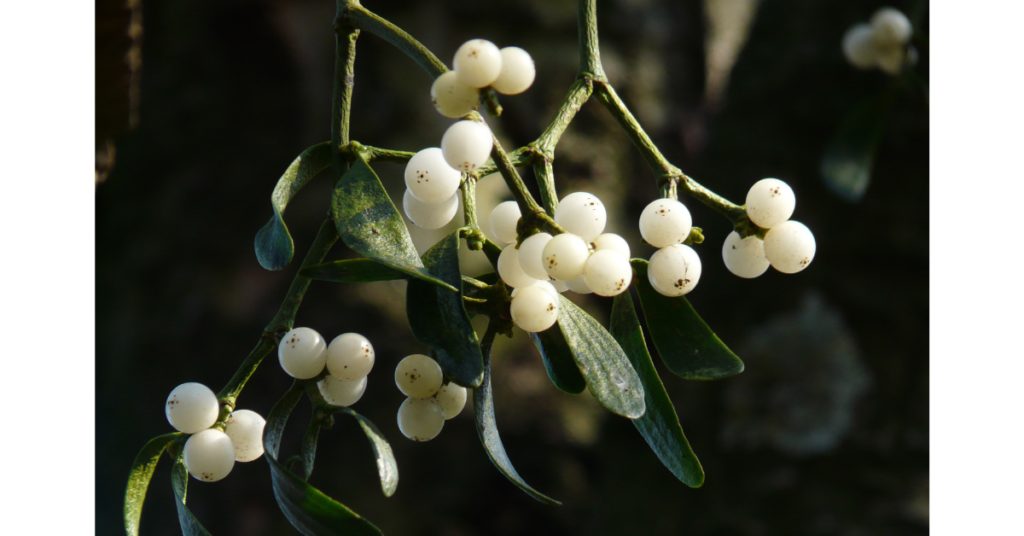Mistletoe (Viscum album)
Shakespeare calls it “the baleful Mistletoe”, alluding to the Scandinavian legend that Baldr (or Balder), the god of Beauty, Peace, and Light, was killed by an arrow made from or laced with mistletoe. He was revived following the request of the other gods and goddesses, and mistletoe was afterwards associated with the goddess of love, and it was ordered that everyone who passed under it should give and receive a kiss, to demonstrate that the mistletoe had become an emblem of love and not of hate.
Mistletoe was greatly revered by the Druids (ancient Celtic natural philosopher-priests). They gathered mistletoe with great ceremony, by climbing an oak tree, and severing the mistletoe with a golden knife. It was always cut at a particular phase of the moon, right at the beginning of the year, and the Druids only sought the mistletoe following dreams and revelations instructing them to hunt for it. On the occasions when such dreams had not occurred – or it mistletoe had fallen from the tree – it was a considered to be a forewarning of misfortune. The Druids believed that mistletoe protected its possessor from all evil, and that the oaks on which it was seen growing were to be respected because of the wonderful cures that the Druids were able to achieve with it.
At the beginning of the New Year, Druidic neophytes would travel around announcing that the New Year had arrived. People speculate that the custom of including mistletoe in the decoration of our homes during the Christmas season is a relic of this old custom.
Other names: European mistletoe, common mistletoe.
Description and the places it grows
Native to the UK and Europe, mistletoe is a parasitic evergreen that grows around the branches of a host tree or shrub from which it extracts water and nutrients, such as oak, aspen, or apple (more than 200 types of host trees have been recorded). Leaves are oval, smooth-edged and grow in pairs, with clusters of 2-6 waxy white berries, which are toxic to humans.
Parts Used
Leaves and young twigs are collected just before the berries form and are dried.
Medicinal Action and Uses
The following information has been researched and adapted from a number of ancient Herbals by a number of writers and represents a consensus of these. This information is not to be construed as constituting medical advice.
Mistletoe had a reputation for curing epilepsy and other convulsive / spasmodic nervous disorders. The physiological effect of the plant is to lessen and temporarily benumb such nervous action as is reflected to distant organs of the body from some central organ, which is the actual seat of trouble. In this way the spasms of epilepsy and of other convulsive distempers are allayed.
Contraindications
Large doses of the plant, or of its berries, would, on the contrary, aggravate these convulsive disorders. Young children have been attacked with convulsions after eating freely of the berries.

